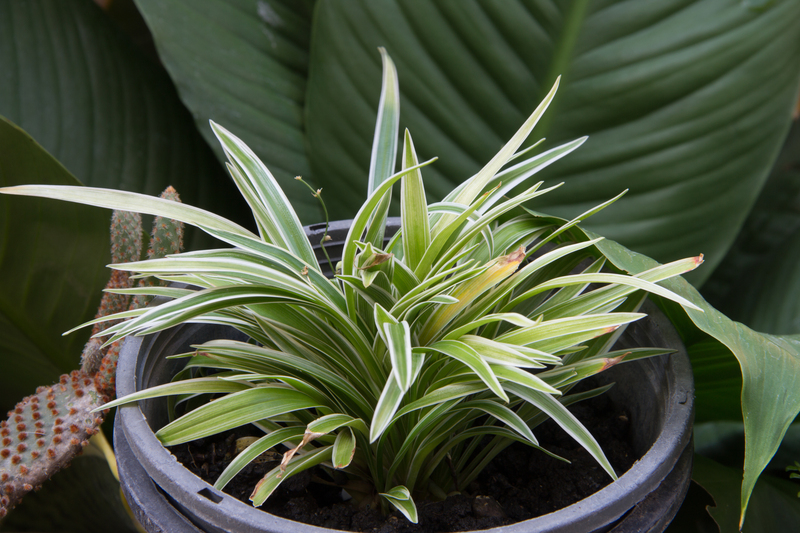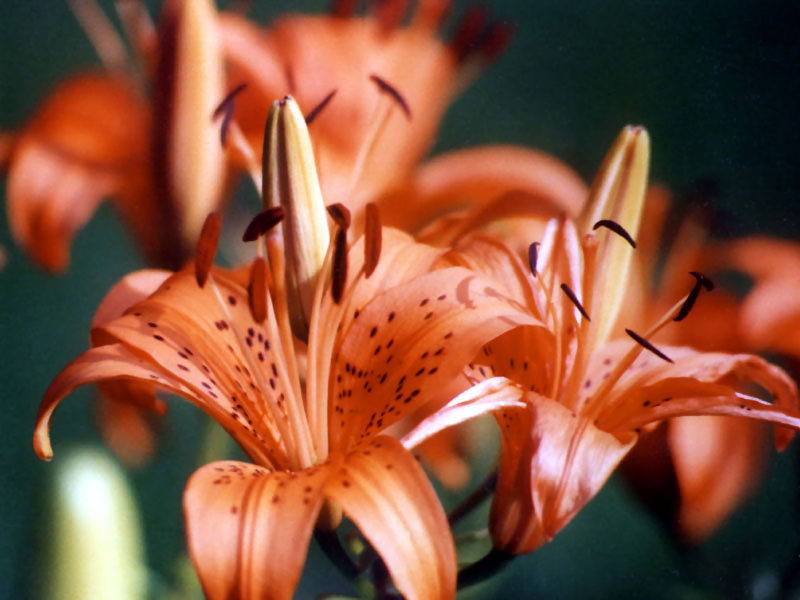Harmonizing Garden Spaces with Your Furry Companion
Posted on 08/06/2025
Harmonizing Garden Spaces with Your Furry Companion
Creating a harmonious garden that both you and your beloved pet can enjoy is more than just a trend--it's a thoughtful approach to outdoor living that melds beauty with functionality. More families than ever are looking for creative ways to balance their green spaces with the needs of their furry companions. By blending safe plants, durable landscaping, and pet-friendly design, you can transform your backyard into a space where tails and petals coexist in perfect harmony.
Understanding the Needs of Your Four-Legged Friends in the Garden
Your garden can be a paradise not only for you, but for your loyal dog or adventurous cat. Therefore, understanding what your furry friends require is the first step to creating a harmonious garden space that welcomes everyone.
- Space to Roam: Pets, especially dogs, need ample room to explore, play, and relax. Felines love secret hideaways and perches in the greenery.
- Safety: Ensuring the absence of hazardous plants, sharp objects, or toxic chemicals is essential for your pet's wellbeing.
- Sensory Enrichment: Dogs and cats appreciate interesting smells, textures, and activities.
- Shade and Shelter: Animals need areas to escape the sun and sudden rain showers.
By incorporating your furry companion's needs into the garden design, you foster a shared sanctuary that enhances your pet's lifestyle and wellbeing.

Pet-Friendly Garden Designs: Blending Aesthetics and Utility
Harmonizing garden spaces with your pet is about blending elegant design with pet functionality. Thoughtful planning can help you achieve a landscape that's visually pleasing and pet-safe. Here are some top dog-friendly garden ideas and cat-friendly tips for your outdoor area:
1. Choose Non-Toxic Plants and Materials
Many common garden plants are beautiful but dangerous for pets. Prioritize pet-safe greenery that adds color and privacy without risk.
- Safe Plant Choices: Marigolds, sunflowers, snapdragons, and rosemary are safe options for dogs and cats. Catnip and cat grass provide both beauty and enrichment for felines.
- Avoid Common Hazards: Lilies, azaleas, foxgloves, daffodils, and sago palms can be extremely toxic. Always double-check new plants before planting.
2. Create Durable, Low-Maintenance Surfaces
Paved paths and mulched beds maintain their look even with heavy pet traffic. Avoid sharp stones or cocoa shell mulch (toxic to dogs). Instead, opt for:
- Flagstone or Brick Pathways: Hard-wearing, paw-friendly, and visually appealing.
- Cedar or Pine Mulch: Gentle on sensitive paws and naturally insect-repellent.
- Artificial Turf: Offers a lush, evergreen look with minimal mud and mess.
3. Dedicated Play and Dig Zones
Pets love to dig and play, especially dogs. Rather than fight this instinct, allocate a pet play zone with sand or soft mulch where they can dig to their heart's content.
- Install a sandbox or digging pit for dogs.
- Use potted plants or raised beds to shield prized flowerbeds.
- Add tunnels or cat trees for feline adventurers.
4. Pet-Friendly Water Features
A gentle water fountain or small pond can provide cooling relief for your furry friends while enhancing your garden's tranquility. Make sure water features are shallow, safe, and easy to clean to prevent accidents and algae buildup.
Safety First: Keeping Your Furry Companion Protected Outdoors
No matter how beautiful your harmonized garden with pets, safety remains paramount. Here are the most effective precautions to take:
- Secure Fencing: Ensure fences are tall enough and have no gaps. For cats, consider specialized cat-proof fencing or 'catios' (cat patios).
- Chemical-Free Care: Avoid pesticides, herbicides, and fertilizers. Opt for organic gardening techniques and pet-friendly lawn care.
- Compost Carefully: Keep compost bins covered to prevent curious noses from ingesting spoiled or toxic foods.
- Store Tools and Hazards: Keep sharp garden tools and potentially dangerous items like slug pellets or antifreeze well out of reach.
Recognizing Toxic Plants and Garden Dangers
Understanding which plants and chemicals can be harmful is crucial. Symptoms of poisoning in pets include vomiting, diarrhea, drooling, weakness, and seizures. For a harmonized garden, always research new additions and train your pet to avoid unfamiliar vegetation.
Keep a list of toxic plants such as tulips, oleander, yew, and rhododendron handy and regularly inspect your garden for mushrooms or weed growth that could pose a risk.
Enriching the Outdoor Experience for Both Pet and Owner
Garden spaces are at their best when everyone enjoys them together. Here's how to maximize fun and relaxation for you and your animals:
Add Activity Zones
- Interactive Paths: Dogs love running loops. Create oval tracks or looped pathways to encourage natural exercise.
- Agility Features: Low hurdles, tunnels, and climbing frames add fun and challenge for active pets.
- Scent Gardens: Plant lavender, thyme, or mint for pets to sniff and explore.
Comfortable Resting Spots
Every well-designed pet-friendly garden should include shady retreats and soft resting areas.
- Raised Decks or Platforms: Give your dog or cat a place to survey the landscape or enjoy the sun.
- Shaded Hideouts: Use pergolas, shrubs, or small dog houses for cool, comfy shelter.
- Outdoor Beds: All-weather pet beds let your companion nap comfortably while you garden or entertain.
Wildlife-Friendly Features
Attracting butterflies and birds can add a new layer of interest--just keep feeders and birdbaths out of direct reach of playful pets to protect both wildlife and your companion.
Sustainability Meets Pet-Friendly Landscaping
Eco-friendly gardening and harmonizing garden spaces with pets go hand in hand. With a few adjustments, you can reduce your environmental footprint while creating a beautiful, safe outdoor haven:
- Native Plants: Easy to care for and adapted to your region--less watering and fewer chemicals needed.
- Water Conservation: Drip irrigation and rain barrels keep plants healthy without muddy puddles for pets to track inside.
- Reusable Materials: Repurpose old wood or bricks for pathways, and upcycle containers for raised beds or pet play features.
Pro tip: Composting pet waste is discouraged unless using a dedicated commercial system to prevent disease spread.
Balancing Plant Beauty with Pet Activity
The key to a harmonious landscape is finding the equilibrium between lush gardens and playful pets. Raised garden beds, vertical planters, and trellises keep delicate flowers safe while offering dogs and cats more ground to roam. Consider border hedges or decorative fencing around sensitive areas for an integrated look.
Training--A Secret Ingredient in Harmonizing Your Outdoor Haven
Even the sturdiest pet-friendly garden benefits from a little behavioral training. Teach your furry friend to respect boundaries:
- Positive Reinforcement: Reward your dog (or even your cat!) for avoiding flowerbeds and staying on designated paths.
- Set Clear Zones: Use visual markers like stepping stones or small fences to clarify where your pet is allowed to play.
- Redirect Attention: When pets show interest in off-limits spots, lure them back with toys, treats, or attention in their designated area.
Consistency and patience will help your pet adapt, making the garden a peaceful shared retreat.
Pets and Garden Design: Questions & Answers
Q: Can all garden plants coexist with animals?
A: No. Always check the ASPCA's list of toxic and non-toxic plants before introducing anything new to your space. Some plants and shrubs are extremely harmful if ingested.
Q: How do I prevent my dog from digging up the lawn?
A: Designate a specific digging zone and encourage its use by burying toys or chews. Dissuade digging elsewhere with pet-safe deterrents and consistent correction.
Q: What's the best way to protect fragile flowerbeds?
A: Raised beds, border fencing, and dense groundcover plants can shield delicate areas from playful paws. Supervision and training also go a long way.
Q: Are mulches safe for pets?
A: Avoid cocoa shell mulch--it's toxic to dogs. Choose wood chips, straw, or rubber mulches that are certified as pet-safe.

Real-Life Examples: Harmonizing Gardens for Pet Owners
Pet parents around the world are discovering creative ways to marry their love of gardening with their companions' happiness.
- Dog-Friendly Pathways: In suburban areas, curved flagstone walkways and shady nooks let dogs patrol the yard while minimizing plant trampling.
- Cat Exploration Spaces: Urban balconies and patios use vertical planters, cat grasses, and compact hideaways for feline enrichment.
- Dual-Use Water Features: Small, filter-equipped pools serve as both garden accents and splash spots for thirsty pets.
- Community Gardens: Some cities now offer designated dog-friendly plots with community rules and supervision, so everyone can enjoy fresh air safely.
The Joy of a Harmonized Garden Space with Pets
Blending pet-friendly landscaping with beautiful garden design isn't just possible--it's incredibly rewarding. By considering your animal's instincts, preferences, and safety, you can design an outdoor space that is as functional as it is lovely. Think beyond the fence: see your yard through your pet's eyes, and create a vibrant landscape where everyone can thrive.
In conclusion, garden harmony with pets reflects both thoughtful design and the deep connections we share with our furry companions. Whether you're upgrading a small courtyard or reimagining a sprawling lawn, the steps above can help you harmonize your garden spaces with your furry friend--ensuring a lush, lively, and safe outdoor world you'll both cherish for years to come.
Ready to start harmonizing your own garden? Follow these tips and unleash the full potential of your outdoor paradise--tail wags and green thumbs guaranteed!

